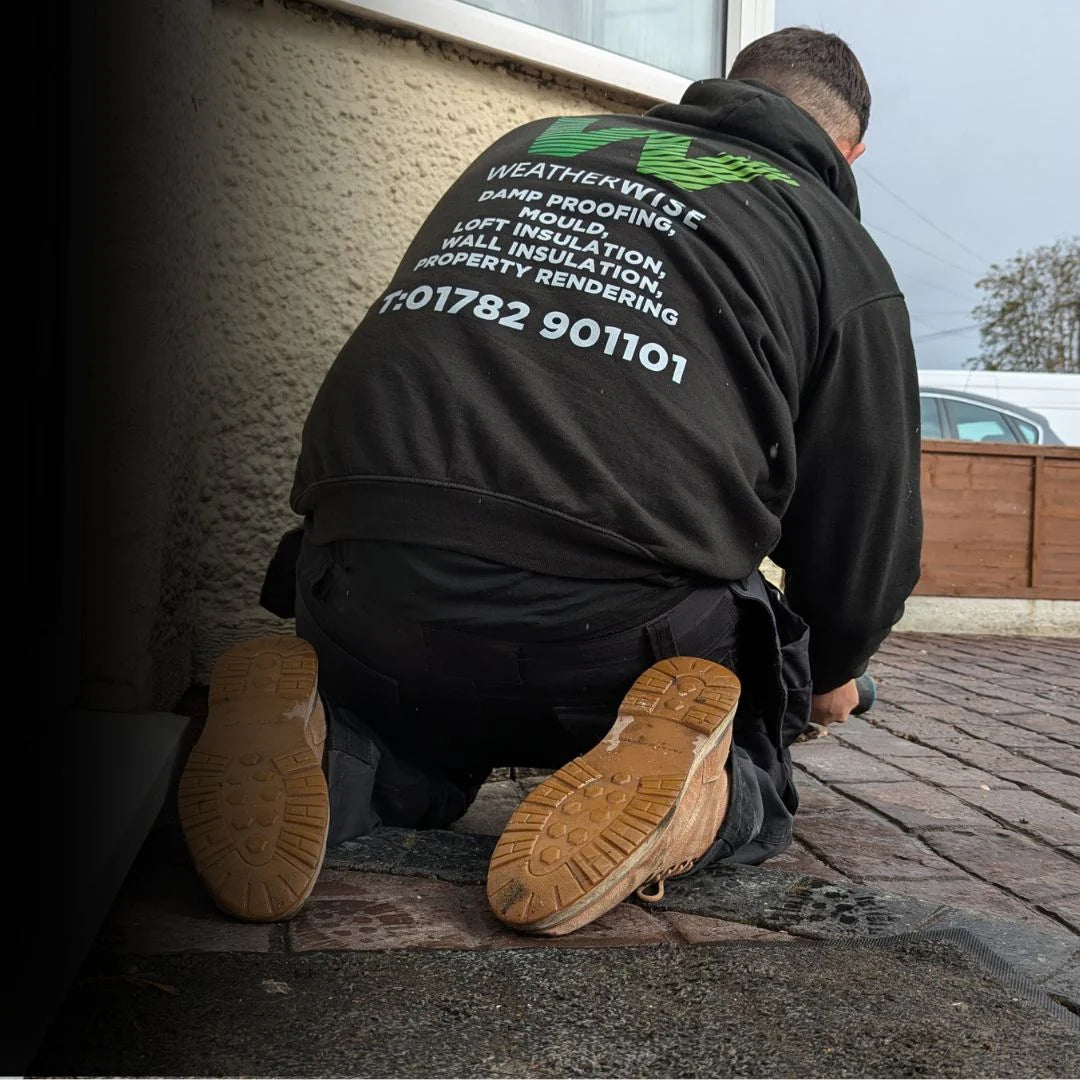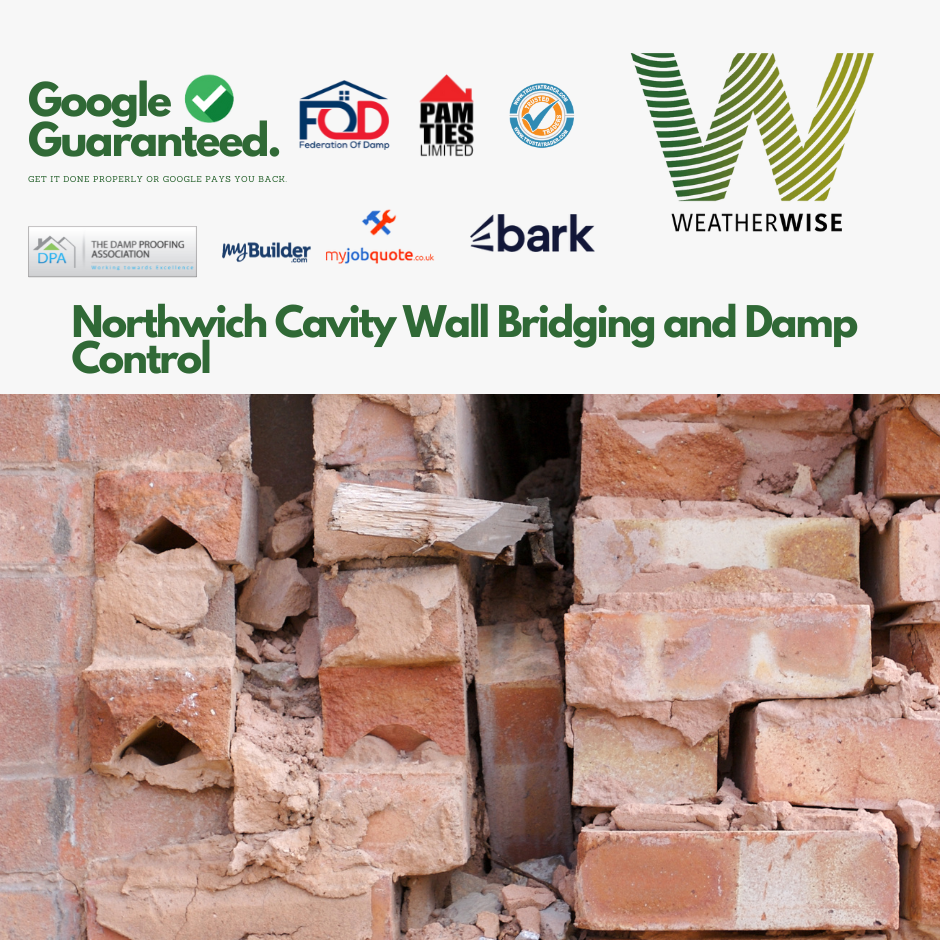Why Cavity Walls Exist — And How Bridging Undermines Them
Cavity walls were introduced in UK homes to stop rainwater from passing through the outer brickwork into your home. The air gap between the two walls acts as a barrier to moisture.
But when that gap becomes blocked — by rubble, mortar droppings, or poorly installed insulation — cavity bridging occurs. This allows water to bypass the cavity and soak into internal walls, causing visible damp patches, mould, and even timber decay.
In Northwich, many properties built before cavity wall regulations were tightened may be affected, particularly if previous work has disturbed or blocked the cavity.
Common Signs of Cavity Bridging
✅ Damp patches high on internal walls (not just at the base)
✅ Black mould forming in cold spots near external walls
✅ A musty smell with no obvious leaks
✅ External walls showing signs of heavy weathering
✅ Insulation that feels damp or compressed
How We Address Bridging and Prevent Damp
At Weather Wise Solutions, we carry out a full assessment to identify cavity bridging and eliminate the moisture pathway:
-
Inspection using cavity cameras or boroscopes
-
Clearing rubble, debris, or saturated insulation
-
Installing new cavity barriers or drainage where needed
-
Using breathable external coatings to reduce further rain penetration
-
Applying internal treatments if the damp has already caused salt contamination
We use tried-and-tested materials from suppliers like PAM Ties to ensure long-lasting results.
Why Choose Weather Wise in Northwich?
-
Local, family-run company with experience in cavity wall diagnostics
-
Members of the Damp Proofing Association
-
Accredited by the Federation of Damp
-
CPD-certified in Dampness in Buildings
-
Honest, tailored advice to protect your home
Book a Free Damp Assessment here:
https://weatherwiseuk.co.uk/pages/contact



